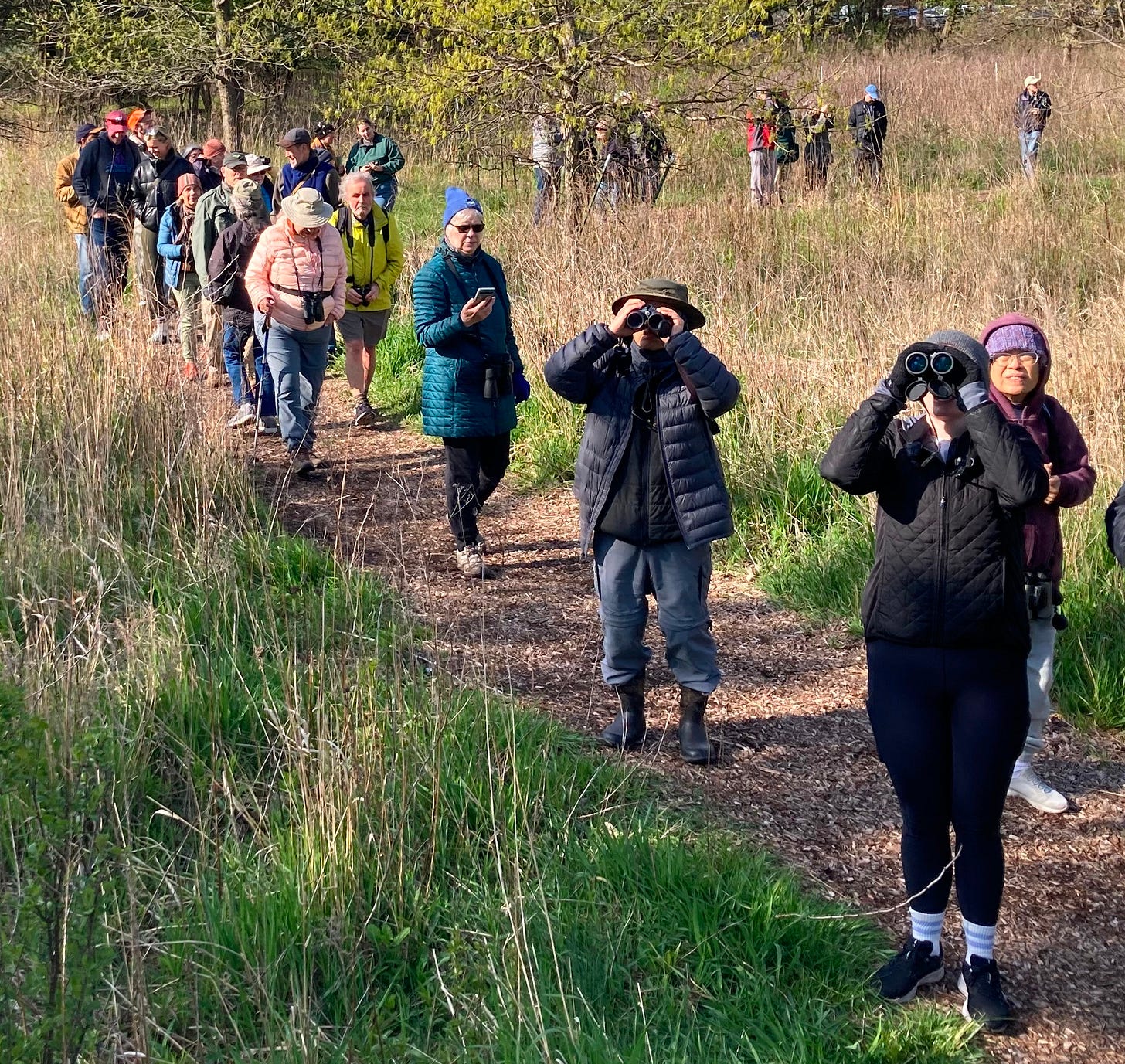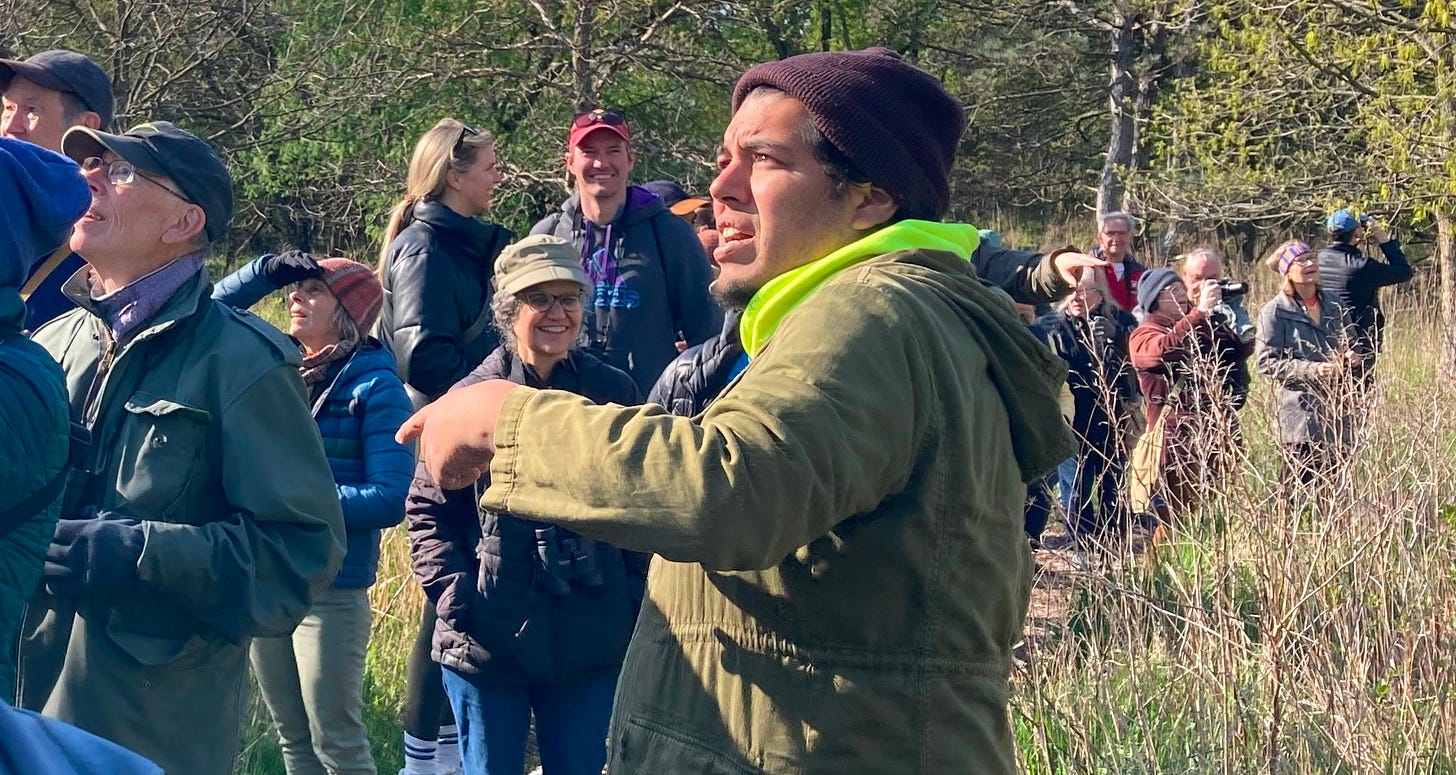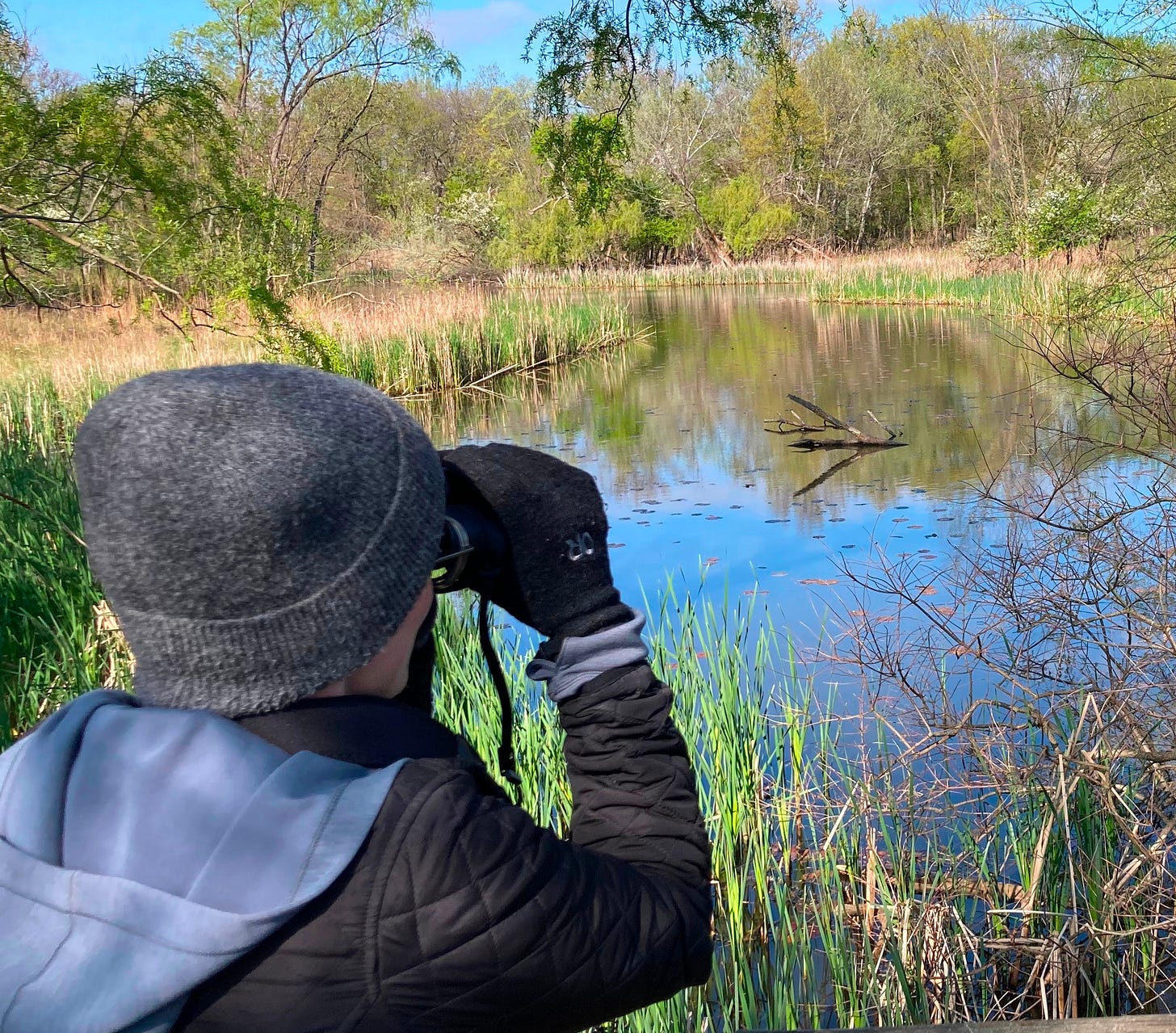Why beginners shouldn't go birding alone
North Park Village Nature Center is a Chicago birding hotspot
“There’s a heron being chased by a red-winged blackbird,” J’orge Garcia notified a small crowd during a bird walk on May 3.
A few minutes later, he interrupted his explanation of a “hummingbird tree” to point out, “There’s a heron, again being chased by a red-winged blackbird,” as the long-necked heron flew back to the wetland where it had started.
This is the type of action and information you could miss out on if you are a beginning birder who goes alone.
Garcia leads spring migration outings at North Park Village Nature Center on Saturdays in April and May from 8-10 a.m. No registration is required. Parking and entry are free. Beginners are particularly welcome.
On May 3, more than 30 people showed up for the trail walk through 46 acres of woods, wetlands, prairie and oak savanna. That was a bigger crowd than I’ve ever experienced on a bird walk, but it wasn’t a problem, because there were three leaders and the group split up.
The crowd didn’t seem to bother the birds too much. By the end of the two-hour walk, nearly 50 species would be counted, including a Baltimore oriole, warblers, and a solitary sandpiper — a bird whose dark green back and greyish head blended so well with the muddy shoreline of the wetland that it was hard to spot.
Immediately on entering the preserve, one hour before it officialy opened, the group saw a red-bellied woodpecker fly up in a tree and start climbing around. It refused to surrender its territory when other red-bellies showed up. “The fight is on,” one of the leaders said.
Garcia explained why the bird, which has a bright red stripe on its head, is not called a red-headed woodpecker. That name belongs to another species. The red-belly is named for the male’s red belly, which is difficult to see, especially since it kept its back turned to us.
A former STEM educator at the Chicago Public Library, Garcia stopped on the trail to scan a grassy opening in the woods. He pointed out a snag, or a dead/dying tree, that he referred to as the “hummingbird tree,” because hummers like to perch on it and feed on nearby honeysuckle.
The Chicago Park District has removed thickets of buckthorn — a tree/shrub native to Eurasia that out-competes native plants — from this area of the preserve, creating an open area favorable to red-winged blackbirds, Garcia said.
The abundant red-winged species is not only unafraid to attack larger birds like herons, but also will dive-bomb humans, to defend their nests. They are “a familiar sight atop cattails, along soggy roadsides, and on telephone wires.”
The preserve’s wetlands are overrun with invasive cattails, creating thick mats that make it difficult for the establishment of other plants, according to an interpretive sign along a boardwalk. As a result, management is targeting the cattails with fire to reduce the mats and give native sedges and other aquatic plants a chance.
After co-leader Mark Pohlad, an associate professor of art history at DePaul University, commented on the large number of “eyes in the skies” provided by the group, one set of those eyes spotted an American kestrel sitting in a treetop. The small falcon then took off, spending several minutes hovering overhead, apparently hunting.
Minutes later, Pohlad let the group know of a lone, bright-yellow American goldfinch perched in the middle of a spectacular redbud tree’s purplish-pink flowers.
Another crowd pleaser were several tree swallows, thanks to their “deep-blue iridescent backs and clean white fronts” as well as their “acrobatic twists and turns” while chasing insects.
Pohlad made fun of himself after thinking he became overexcited when he notified the group of “a Nashville warbler on this tree. Oh sorry, it just flew away. Probably because someone is screaming.”
The Chicago Birding Alliance quotes the eBird online database as saying the top three birding spots in the Chicago area by species count are Montrose Point Bird Sanctuary, Illinois Beach State Park, and Jackson Park.
But the alliance, formerly known as the Chicago Audubon Society, lists the North Park Village Nature Center as one of its featured favorites. The village campus is a former tuberculosis sanitarium now home to an apartment complex and offices in the original building, including the alliance’s office.
The Chicago Ornithological Society also held a field trip at the nature center on May 3, calling the event “a big day for Nashville Warblers,” eight of which the society observed.
Located north of Northeastern Illinois University, the center is open seven days a week, from 9 a.m. until 4 p.m.
The Chicago Bird Alliance offers tips online on how to get started with birding. “Birders are a welcoming group, and there are lots of them in the Chicago area,” the alliance reports.
Previously, in Reporting From Albany Park:







